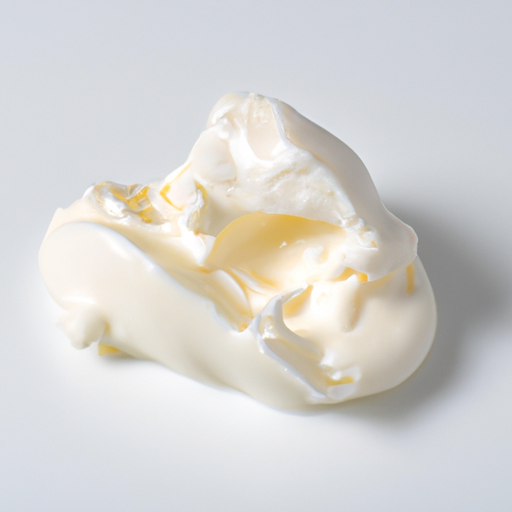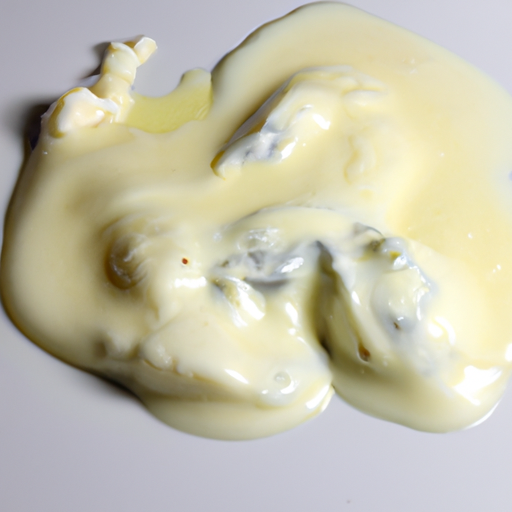Can I Eat Expired Clotted Cream?
Safe to eat up to 3 days after expiry
✅Fresh Clotted Cream

⚠️Spoiled Clotted Cream

Storage Guidelines
Storage Location
Fridge
Ideal Temperature
0-4°C / 32-40°F (fridge)
Best Storage Method
Store clotted cream in an airtight container in the refrigerator. Ensure the lid is tightly sealed to prevent contamination and moisture absorption.
Shelf Life
Average Shelf Life
14 days
Extended Shelf Life (When Frozen)
30 days
Signs of Spoilage
Clotted cream may develop an off smell, discoloration, or mold growth. If it appears lumpy or has an unusual texture, it should not be consumed.
Additional Information
Alternative Uses
Clotted cream can be used as a topping for desserts, scones, or pancakes. It can also be incorporated into recipes for creamy sauces or frostings.
Possible Substitutions
Heavy cream or mascarpone can be used as substitutes for clotted cream in recipes, although the texture and flavor may differ slightly.
Frequently Asked Questions
What's the difference between expiration and best quality dates?
▼
The expiration date indicates the last date the product is guaranteed to be safe to consume, while best quality refers to the period during which the product maintains optimal flavor and texture. Consuming after the best quality date may not pose a safety risk but could affect taste.
How can I tell if Clotted Cream has gone bad?
▼
To check if clotted cream has gone bad, look for any signs of mold or an off-color, as it should be a creamy, pale yellow. Smell it for any sour or rancid odors, which indicate spoilage. Additionally, if the texture is unusually grainy or it has separated significantly, it's best to discard it.
What are the food safety risks?
▼
Clotted cream is a dairy product that can harbor bacteria if not stored properly. Always refrigerate after opening and avoid leaving it at room temperature for extended periods to reduce the risk of foodborne illness.
What are some pro storage tips?
▼
To extend the shelf life of clotted cream, consider freezing it in small portions. Thaw in the refrigerator before use. Always label containers with the date to track freshness.
Any interesting facts about Clotted Cream?
▼
Clotted cream originated in the West Country of England and is a traditional accompaniment to scones during afternoon tea. It is made by slowly heating full-fat milk and allowing it to cool, forming a thick cream layer.
How long after opening can I safely eat Clotted Cream?
▼
You can safely eat Clotted Cream for up to 14 days after opening, provided it has been stored correctly in the fridge. However, for the best quality, try to consume it within the first week. Always check for any signs of spoilage before consuming.
Can I eat Clotted Cream if it’s been at room temperature for 2 hours?
▼
Yes, Clotted Cream can be eaten if it has been at room temperature for up to 2 hours. The FDA recommends that perishable foods should not sit out for more than 2 hours to prevent bacterial growth. Always inspect it for any off odors or changes in texture before consuming.
Does the type of container affect Clotted Cream's shelf life?
▼
Yes, the type of container can impact Clotted Cream's shelf life. It's best to store it in an airtight container to prevent exposure to air and moisture, which can lead to spoilage. Glass or tightly sealed plastic containers are ideal. Avoid leaving it in the original packaging if it's not resealable.
Can I store Clotted Cream next to other dairy products in the fridge?
▼
Yes, you can store Clotted Cream next to other dairy products like butter or yogurt. However, make sure they are well-sealed to prevent cross-contamination. Keeping dairy products together can help maintain a consistent temperature and humidity level, which is beneficial for their freshness.
How does freezing affect the texture of Clotted Cream when thawed?
▼
Freezing Clotted Cream can change its texture, making it grainy or separating upon thawing. To minimize this, freeze it in small portions and allow it to thaw slowly in the fridge rather than at room temperature. Whisking it after thawing can help restore some of its original texture.
Do different brands of Clotted Cream have different shelf lives?
▼
Yes, different brands of Clotted Cream may have varying shelf lives based on their ingredients and production methods. Always check the expiration date on the packaging, as some brands may use preservatives that can extend shelf life. However, once opened, the general guideline of 14 days applies.
How does cooking Clotted Cream affect its expiration?
▼
Cooking Clotted Cream can change its properties but does not significantly extend its expiration date. If you cook it, it should still be consumed within the original shelf life of 14 days after opening. Ensure it’s heated to the right temperature to kill any bacteria, but avoid using it if it has already passed its expiration date.
Does Clotted Cream last longer in summer or winter when stored in the fridge?
▼
Clotted Cream typically lasts about the same duration in both summer and winter when stored properly in the fridge. However, in summer, you may need to be more vigilant about checking for spoilage due to higher temperatures affecting the fridge’s efficiency. Always keep the fridge at or below 40°F (4°C) for optimal storage.
How can I safely transport Clotted Cream for 3 hours?
▼
To safely transport Clotted Cream for up to 3 hours, keep it in an insulated cooler with ice packs to maintain a cool temperature. Make sure it is sealed tightly to prevent spills and contamination. If possible, avoid transporting it on hot days or in direct sunlight to minimize the risk of spoilage.
Expiration Calculator
Sources
For more information on food safety and expiration guidelines, visit our Sources page.
Scan your food directly and get instant safety info using our AI-powered camera feature.
Similar Storage Requirements
Cooked Angel Hair Pasta
Grains & Pasta
View expiration date and storage guide →
Black Truffle
Specialty Foods
View expiration date and storage guide →
Enoki Mushrooms
Fruits & Vegetables
View expiration date and storage guide →
Lamb Chops All Cuts Including Shoulder Loin Rib Fresh Raw
Meat & Poultry
View expiration date and storage guide →
Homemade Bacon Fat
Cooking Ingredients
View expiration date and storage guide →
Basil Fresh
Herbs and Fresh Produce
View expiration date and storage guide →
Cooked Breakfast Sausage Leftovers
Meat & Poultry
View expiration date and storage guide →
Almond Milk
Beverages
View expiration date and storage guide →
Duck Whole Fresh Raw
Meat & Poultry
View expiration date and storage guide →
Reviewed By: Food Safety & Expiration Experts
At Can I Eat Expired, we are committed to providing accurate, science-backed information about food expiration and storage safety. Our content is carefully reviewed based on guidelines from leading food safety organizations, including:
- ✅U.S. Food & Drug Administration (FDA) – Food Safety Guidelines
- ✅United States Department of Agriculture (USDA) – Food Storage & Expiration Dates
- ✅World Health Organization (WHO) – Foodborne Diseases & Safety
- ✅Centers for Disease Control & Prevention (CDC) – Preventing Foodborne Illness
🔍 How We Ensure Accuracy
- We use official food safety sources to guide our recommendations.
- Our team continuously reviews and updates content based on the latest research.
- We encourage users to always check for signs of spoilage and follow proper storage guidelines.
📚 Have Questions?
If you have specific concerns about food expiration or safety, we recommend consulting a registered dietitian, food scientist, or your local health department.
Note: These are general guidelines. Always use your best judgment and when in doubt, throw it out.